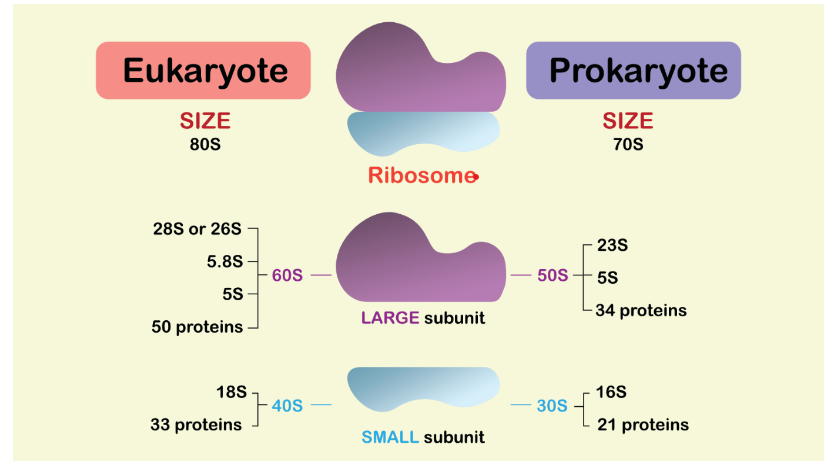Table of Contents
Definition of Ribosome
A ribosome can be defined as a complex cellular organelle composed of RNA (ribonucleic acid) and proteins. It acts as the cellular protein factory, translating the genetic information encoded in messenger RNA (mRNA) molecules into functional proteins. Ribosomes are found in all living cells, from bacteria to humans, highlighting their essential role in life processes.
Discovery of ribosome
In the 1950s, Palade, along with his colleagues Albert Claude and Keith Porter, used electron microscopy to study cellular structures. Through their observations, they identified and described the ribosomes for the first time. They recognized these small granular structures as crucial players in protein synthesis.
For his groundbreaking research, George Palade was awarded the Nobel Prize in Physiology or Medicine in 1974, jointly with Albert Claude and Christian de Duve. His work provided a fundamental understanding of the structure and function of ribosomes and their involvement in protein synthesis, laying the groundwork for further investigations in the field.
Structure of Ribosome
Ribosomes consist of two subunits: a larger subunit (the 50S subunit in bacteria and the 60S subunit in eukaryotes) and a smaller subunit (the 30S subunit in bacteria and the 40S subunit in eukaryotes). These subunits come together during protein synthesis and dissociate afterward.
Each subunit comprises both ribosomal RNA (rRNA) molecules and numerous proteins. The rRNA molecules play a critical role in catalyzing the formation of peptide bonds during protein synthesis, while the proteins provide structural stability and facilitate various functions of the ribosome.
Also Check Relevant Topics:
Types of Ribosomes
Ribosomes, the essential cellular organelles responsible for protein synthesis, come in distinct variations based on cell type and evolutionary lineage. Prokaryotic cells, exemplified by bacteria, harbor smaller ribosomes termed 70S. This denomination signifies their sedimentation rate in ultracentrifugation experiments. Comprising a 30S small subunit and a 50S large subunit, prokaryotic ribosomes facilitate translation of genetic code into proteins.
In contrast, eukaryotic cells, encompassing plants, animals, and fungi, host larger 80S ribosomes. These consist of a 40S small subunit and a 60S large subunit. The size disparity reflects evolutionary divergence and cellular complexity. Despite variations, the universal role of ribosomes in synthesizing proteins underscores their paramount importance across the biological spectrum.
Diagram of Ribosome

Function of Ribosome
The primary function of the ribosome is to synthesize proteins through a process known as translation. This process involves the conversion of the genetic information stored in mRNA molecules into amino acid sequences, which form the building blocks of proteins.
The ribosome achieves translation through three main steps: initiation, elongation, and termination. During initiation, the ribosome assembles on the mRNA molecule, recognizing a specific start codon that marks the beginning of the protein-coding sequence. Once assembled, the ribosome begins the elongation phase, where it reads the mRNA molecule and adds one amino acid at a time to the growing polypeptide chain. The ribosome moves along the mRNA molecule, linking amino acids together based on the instructions encoded in the mRNA’s nucleotide sequence. Finally, the ribosome reaches a termination codon, signaling the end of protein synthesis and the release of the completed protein.
Frequently Asked Questions (FAQs) on Ribosomes
Where are ribosomes located in the cell?
Ribosomes are found in two locations within the cell: free ribosomes exist in the cytoplasm, while bound ribosomes are attached to the endoplasmic reticulum (ER) or the outer membrane of the nuclear envelope in eukaryotic cells.
What is the difference between free and bound ribosomes?
Free ribosomes are responsible for synthesizing proteins that function within the cytoplasm, such as enzymes involved in metabolic processes. Bound ribosomes, on the other hand, synthesize proteins that are destined for secretion, incorporation into membranes, or transportation to other organelles.
What is the main role of magnesium in ribosome structure?
Magnesium ions aid in the proper assembly of ribosomal subunits. They help to bridge interactions between the rRNA molecules of the small and large ribosomal subunits, promoting their association into a functional ribosome.
Who discovered ribosomes?
George Palade and his colleagues identified and described the ribosomes for the first time.
What is the main function of ribosome?
The main function of ribosomes is protein synthesis, where they translate the genetic information from mRNA into specific amino acid sequences, forming functional proteins.








